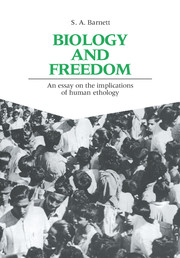Book contents
- Frontmatter
- Contents
- List of illustrations
- Preface
- Acknowledgements
- Part 1 An introduction
- 1 Four portraits
- 2 The pessimistic tradition
- 3 Animals and analogy
- Part 2 Homopugnax: the violent species
- Part 3 Homo egoisticus: the selfish species
- Part 4 Homo operans: the greedy species
- Part 5 Homo sapiens: the human species
- Glossary
- Notes
- References
- Name index
- Subject index
- Frontmatter
- Contents
- List of illustrations
- Preface
- Acknowledgements
- Part 1 An introduction
- 1 Four portraits
- 2 The pessimistic tradition
- 3 Animals and analogy
- Part 2 Homopugnax: the violent species
- Part 3 Homo egoisticus: the selfish species
- Part 4 Homo operans: the greedy species
- Part 5 Homo sapiens: the human species
- Glossary
- Notes
- References
- Name index
- Subject index
Summary
Is there not a warfare to man upon earth?
And are not his days like the days of a hireling?
Job: 7:1.In the west of Sicily, at Segesta, there is an ancient Greek temple of extraordinary perfection. This elaborately designed structure, and the nearby theatre, were put up, at great cost in work and stone, by the people of a small and poor community. Both were results of millennia of learning to make and to use tools, and of centuries of devising methods of measurement and calculation. These skills had been transmitted, from generation to generation, by teaching and imitation and by the use of languages that conveyed both facts and abstract ideas.
The temple at Segesta can be matched by the works of human communities in all lands and in every period. Even before agriculture began, our ancestors made carvings in rock and paintings on stone or bark; and the gatherer–hunters that remain still do so. As well, they compose or repeat legends and myths. Members of the species that produce these monuments and myths also describe themselves. As A.A. Kwapong has said, ‘Every generation and every people have their own mythology on the origins and nature of man.’
This book examines current myths that are sometimes held out as explaining the whole of human existence, including the temples we build, the pictures we paint and the stories we invent about ourselves.
- Type
- Chapter
- Information
- Biology and FreedomAn Essay on the Implications of Human Ethology, pp. 1 - 6Publisher: Cambridge University PressPrint publication year: 1989



